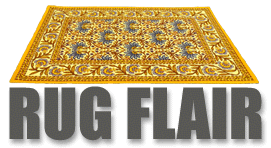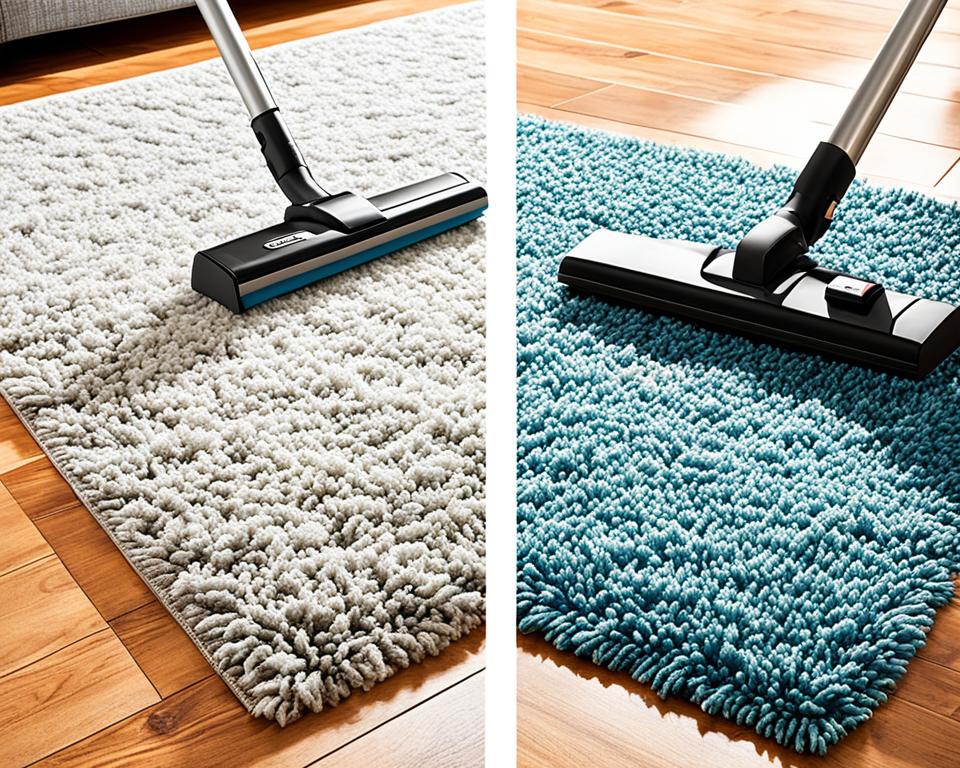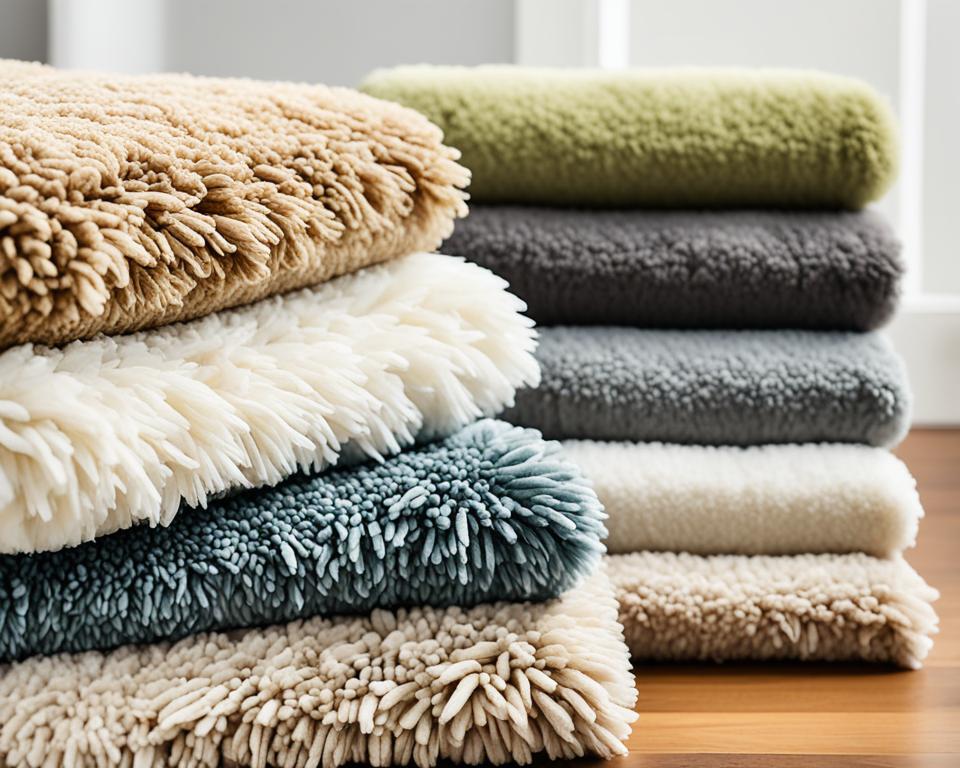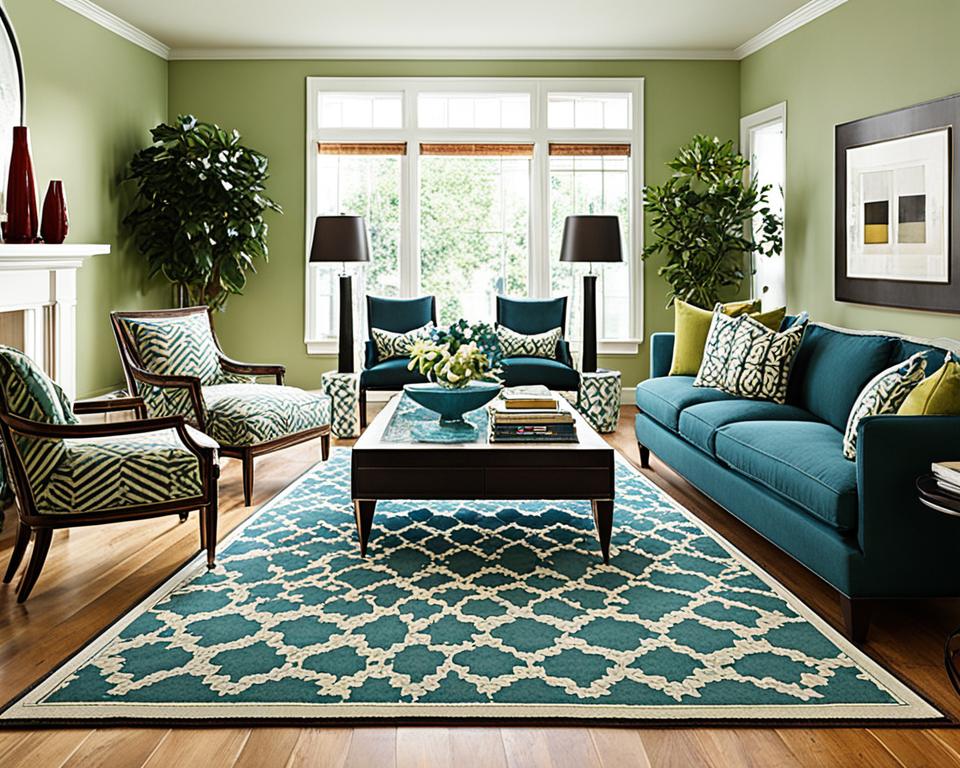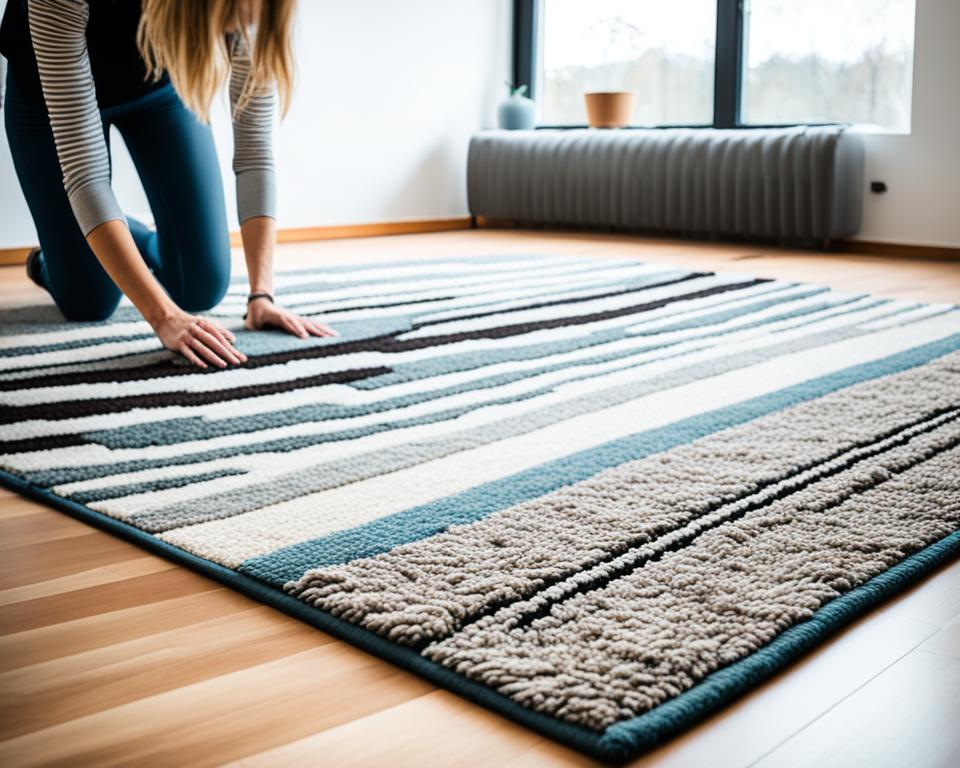Ever found yourself pondering, “Can rugs go in the dryer?” after a spill or a day of deep house cleaning? You’re not alone. Rug care tips often include regular vacuuming and spot cleaning, but when it comes to more thorough washing, the compatibility of your rug with the dryer is a vital consideration. Especially if it’s adorned with rubber backing, you might face the risk of damage, including shrinkage or fading, when exposing rugs to the heat of a tumble dryer. Instead, safe cleaning tips suggest air drying as the most reliable method, preserving the condition and integrity of your beloved floor coverings.
While some rugs might safely endure a tumble on the air-only cycle with no heat, others demand an air-dry approach to avoid the potentially deteriorating effects of dryer heat. This way, you ensure your rug remains in top-notch condition, contributing to the cozy ambiance of your home without the worry of unwanted wear or damage.
Key Takeaways
- Always check if your rug is dryer-safe to prevent damage from heat.
- Rubber-backed rugs should never be placed in the dryer due to potential deterioration.
- Air drying is the safest method for most rugs to avoid shrinkage and fading.
- The air-only dryer cycle can be used for some rugs, as long as no heat is involved.
- Proper rug care and maintenance extend the life and beauty of your rugs.
Understanding the Basics of Rug Care
Properly caring for your rugs not only enhances the aesthetics of your living space but also extends the life of these essential home furnishings. Whether it’s small area rugs that add a pop of color or larger statement pieces that anchor your room’s decor, understanding rug cleaning instructions is paramount. With a variety of materials on the market, each type of rug comes with its own set of cleaning specifications. Let’s delve into the nuances of rug maintenance tips to ensure you know how to dry rugs safely and maintain their pristine condition.
Type of Rugs and Their Cleaning Specifications
From synthetic blends to pure cotton, the fibers that make up your rug dictate how you should approach cleaning it. Rug cleaning instructions for synthetic rugs typically allow for machine washing, making them convenient choices for high-traffic areas. Conversely, more delicate fabrics like wool or silk require special care and often professional cleaning to maintain their integrity. Recognizing the type of rug you own is the first step towards implementing appropriate care practices.
Identifying Washable Rugs and Their Material Composition
A tag bearing the words “machine washable” is a welcome sight for rug owners. These tags, usually found on small area and throw rugs, give a green light for hassle-free cleaning in your home washing machine—provided that you follow the guidelines for a safe wash cycle. Understanding your rug’s material composition is crucial here, as some fabrics may shrink or lose their shape if washed incorrectly. Always opt for a gentle cycle and refrain from using bleach, especially on those with rubber backing, to avoid deteriorative effects.
Consequences of Incorrect Rug Cleaning Methods
Ignoring the care instructions on your rug can lead to unfortunate consequences, such as colors bleeding, fabric shrinkage, or complete deterioration of the rug’s backing. This is especially true when how to dry rugs safely comes into question. Air drying is often recommended over machine drying to prevent these issues. By adhering to the prescribed rug cleaning instructions and rug maintenance tips, you preserve the longevity and appearance of your floor decor.
| Rug Type | Washing Instructions | Drying Method |
|---|---|---|
| Small Area/Throw Rugs | Machine washable unless otherwise specified | Air dry to prevent shrinkage |
| Rubber-backed Rugs | Use cold water, no chlorine bleach | Air dry, no machine drying with heat |
| Braided/Natural Fiber Rugs | Spot clean only, avoid machine wash | Air dry flat to maintain shape |
Rug care is an ongoing process that begins with the selection of a rug with care requirements that match your lifestyle and continues with regular maintenance and appropriate cleaning techniques. Always remember, when in doubt, consult the rug’s care instructions and err on the side of caution to keep your rug in prime condition for years to come.
Can Rugs Go in the Dryer: Knowing Your Rug’s Limitations
When your area rug needs a refresh, you might wonder about drying rugs in the dryer as a quick solution. Today, we’re exploring the boundaries of machine drying rugs to keep your home comfortable and stylish—without compromising the integrity of your textiles. It’s crucial to know the dos and don’ts for your valued floor decor.
Most rugs are delicate creatures, particularly those with rubber backing. Such mats demand extra care, as high temperatures in the drying cycle can cause the rubber to crack or peel, leaving you with a mat that’s lost its non-slip charm. Where does this leave you when it comes to machine drying rugs?
Furthermore, rugs labeled with “dry clean only” offer a clear warning to steer clear of your home dryer. This tag is your rug’s plea for gentleness, often indicating that its construction can’t handle the rough-and-tumble of a drying cycle. Thus, opting for a professional cleaner for heavily soiled, non-washable rugs can be a game-changer, ensuring they remain in optimal condition without any heartbreaking damage.
Now, what if you’re faced with a spill or a pet accident? Knowing your rug’s fabric and limitations becomes your superpower. For those helpless moments, let’s consider your best course of action:
| Rug Material | Cleaning Recommendation | Drying Recommendation |
|---|---|---|
| Rubber-backed | Cold wash without chlorine bleach | Air dry completely, avoid the dryer |
| Synthetic fibers | Machine wash on gentle cycle | Air-only dryer cycle with no heat |
| Natural fibers | Professional cleaning or spot treatment | Air dry flat, away from direct sunlight |
It’s always best to follow the care label on your rug and default to air drying when in doubt. This can prevent the heartache of a shrunken or faded rug and keep your floors looking fabulous. For those instances where only a light fluffing is required, using the air-only cycle without heat can offer a safe middle ground—just remember always to check your rug’s care instructions first.
Remember, your rugs do more than tie a room together—they’re the silent protectors of your floors. So, whether you’re dealing with an antique Persian or a modern microfiber, treat them with the knowledge they deserve, and enjoy the lasting beauty and comfort they provide.
Pre-Cleaning Measures: Ensuring a Safely Washed Rug
Before diving into the process of rug washing, taking the right pre-cleaning measures can make a world of difference. These steps are not just about cleanliness but also about maintaining the integrity and appearance of your rugs. Proper preparation is key to keeping your rugs looking their best and taking pride in the overall look and feel of your home.
Testing for Colorfastness Before Washing
If you’re wondering about the best practices for drying rugs, begin with the step before that—testing for colorfastness. It’s an essential process to ensure colors won’t run during the wash. To test, simply take a damp, white rag or cotton swab and gently rub it against a small, hidden area of the rug. If any color comes off on the rag, then you know to proceed with caution, as the dyes may bleed in the washer, potentially altering the rug’s appearance.
The Importance of Spot Treating Stains
Got a stubborn spot? It’s tempting to toss the rug into the wash and hope for the best, but pre-treating stains is a step you shouldn’t skip. Addressing spills and spots prior to the full rug washing process can make a significant difference. Use a stain remover suited for the type of spill or a bit of heavy-duty liquid detergent for a pre-wash attack on those blemishes. Giving these areas a little attention could save you from lingering stains after the wash cycle.
Dealing with Rugs with Rubber Backing
Those rugs with rubber backing need a gentle touch. To maintain the anti-slip grip and extend the life of such rugs, it’s crucial to never use chlorine bleach which causes the rubber to deteriorate. An oxygen bleach solution, however, can be a safe alternative if used correctly. As a best practice for drying rugs, after they’re washed, lay them flat to air dry away from direct heat or light. This preserves the rubber backing and ensures you get to enjoy your rug for the long haul.
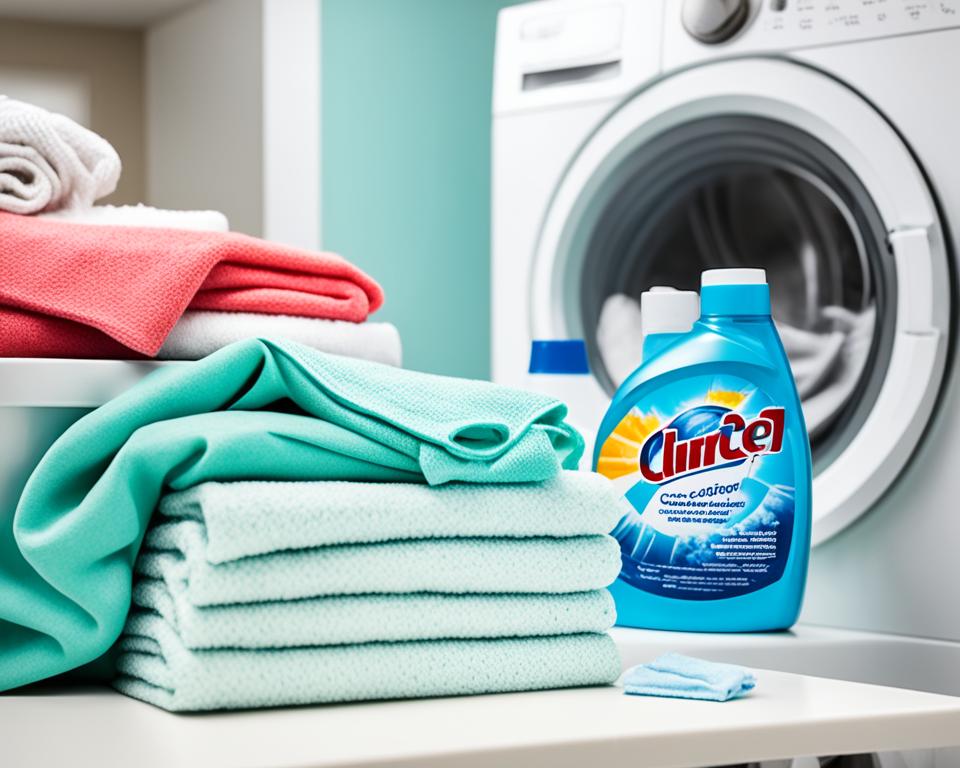
Machine Drying Rugs: Best Practices and Techniques
If you’ve recently washed your area rug and are now considering the drying process, understanding the best practices for machine drying is key to protecting your investment. While it’s often recommended to avoid machine drying altogether due to the risk of heat damage, sit tight—there’s more to rug care tips that can help you dry your rugs effectively without causing them harm.
The golden rule in rug care is to keep high heat at arm’s length. Why? Because those warm and cozy fibers that tickle your toes could end up shrinking or fading with too much heat. That’s why opting for air drying is usually the smarter, and safer choice. But if time is not on your side, the air-only cycle on your dryer offers a compromise—let’s explore why.
| Drying Method | Rug Type | Benefits |
|---|---|---|
| Air Drying | All Rug Types | Prevents shrinkage and preserves color integrity |
| Machine Drying (Air only, no heat) | Rugs without rubber backing | Quick drying time without heat damage |
Should creases be a concern after your rug sees the wash, using the air-only cycle in a tumble dryer can provide relief. This particular cycle can fluff up your rug without the heat, leaving it soft and presentable. Ensure you proceed with caution—this technique is generally not advised for rugs with a rubber backing, as even the tumble action can be too rough for them.
For those rugs that have a little less tolerance, like the ones with rubber backing or hand-knotted details, a spot in the shade or a day on the clothesline does wonders. Fresh air and indirect sunlight are your best allies. However, if your rug’s label suggests otherwise or mentions professional cleaning, trust those instructions for the longevity of your rug.
In the event you encounter harsh stains, the use of oxygen-based bleach can be considered, but please, no chlorine bleach. It’s a big no-no for your colorful threads, especially on those with protective backings.
Overall, these rug care tips are intended to arm you with knowledge so you can keep your rugs looking lovely for as long as possible. Stay away from high heat, say no to bleach, and opt for airy spaces or gentle machine cycles to avoid the heartache of ruined rugs.
- Always prioritize air drying or the air-only dryer cycle with no heat
- Avoid the use of bleach, particularly chlorine bleach
- Use oxygen-based bleach cautiously for lightening and sanitizing your rugs
- Embrace alternative drying methods like air-drying on a clothesline or rack for optimal results
By following these rug care tips, you’re not just cleaning, you’re caring. When your rug is finally dry and ready to grace the floor again, its vibrancy, shape, and comfort will thank you for the extra attention to detail in the drying process.
How to Dry Rugs Safely: Air Drying vs. Machine Drying
Once you’ve washed your area rug, the next question that typically arises is whether air drying or machine drying is the safer and more effective method. Certainly, each approach has its advantages, and through careful consideration of the type of rug and the drying options available, you can ensure a result that maintains the quality and longevity of your rugs. Let’s explore the best ways to dry rugs safely, including rug drying tips that will extend the life of your floor accessories.
Benefits of Air Drying
Air drying rugs is paramount in safeguarding against the common pitfalls associated with machine drying. This method vastly reduces the risks of shrinkage, color fading, and the weakening of fibers – concerns that are especially pressing with rugs containing vibrant colors or delicate materials. By harnessing the power of air circulation, either outdoors or indoors, your rugs can retain their structural integrity and aesthetic appeal without the intrusion of harmful heat from appliances. Utilizing a clothesline, drying rack, or simply laying the rug flat in a well-ventilated area helps maintain the texture and quality post-washing.
Understanding the Air-Only Cycle for Rugs in the Dryer
If you choose to use a dryer, the air-only cycle is your go-to option. This cycle circulates room-temperature air around the rug, mimicking the air drying process but at a more accelerated pace. It’s crucial, however, to ensure that your rug is suitable for this method, as not all materials can withstand even the gentlest tumble inside a dryer. For instance, rugs without any rubber backing may endure this process well, offering a quickened drying time while still preventing the heat damage that regular cycles can inflict.
Washing and Drying Best Practices for Rubber-Backed Rugs
Rubber-backed rugs require unique consideration due to their vulnerability to heat. While washing these rugs, it is advisable to use cold water and opt-out of any chlorine-based cleaning agents which can cause the rubber to deteriorate or flake. Drying them safely becomes a matter of air drying; avoid machine drying with heat altogether. If you’re in a pinch, a no-heat tumble in the dryer may be permissible for a quick refresh, as long as you remove the rug promptly to prevent any misshaping or damage.
| Rug Type | Preferred Drying Method | Why It’s Recommended |
|---|---|---|
| Rubber-Backed Rugs | Air Drying/No-Heat Tumble | Prevents heat damage to rubber backing |
| Delicate and Colored Rugs | Air Drying | Conserves color vibrancy and fabric structure |
| Synthetic Rugs | Air Drying/Air-Only Cycle | Ensures minimal impact on synthetic fibers |
In summary, understanding your rug’s material and backing is essential to determine the safest drying method. Whether you decide on air drying or utilizing the air-only cycle in your dryer, taking steps to protect your rug’s lifespan and appearance is an investment in the beauty and comfort of your home. Adhere to these rug drying tips, and your floor coverings will continue to enhance your living space for years to come.
Choosing the Right Detergent for Your Rugs
Embarking on the task of washing your rugs at home can be less daunting when you are equipped with the right information—specifically, selecting the appropriate detergent that’s up to the task. Your rug is a vibrant part of your home decor; thus, gentle and effective cleaning is paramount to maintain its appearance and longevity. Let’s delve into understanding the ingredients to evade and discover the recommended detergents that safeguard the essence of your precious rugs.
Ingredients to Avoid When Washing Rugs
When you’re gathering your rug washing tips, start by noting what not to use. Harsh chemicals, such as chlorine bleach, should never find their way into your rug cleaning regimen. They not only jeopardize the color vibrancy but threaten the structural integrity of many rug fibers and backings. For those comfy rugs underfoot with a no-slip rubber backing, avoiding bleach is especially crucial, as it leads to the rubber deteriorating over time.
Recommended Detergents for Rug Longevity
Turning our focus to what you should use, you’ll find that the market offers several rug-friendly options. One standout selection is Heritage Park’s All-Purpose Laundry Detergent. This eco-conscious choice brings to your laundry room a powerful blend of natural, plant-based enzymes ready to tackle dirt and stains without being hostile to your rugs’ delicate fibers.
Whether you’re dealing with a cherished handmade piece or a practical machine-made mat, adhering to the recommended amount of such a gentle detergent ensures a successful clean while preserving the fabric’s integrity. Add this to your arsenal of recommended detergents for rugs, and enjoy the peace of mind that comes with knowing you’re using a product designed for effectiveness and safety.
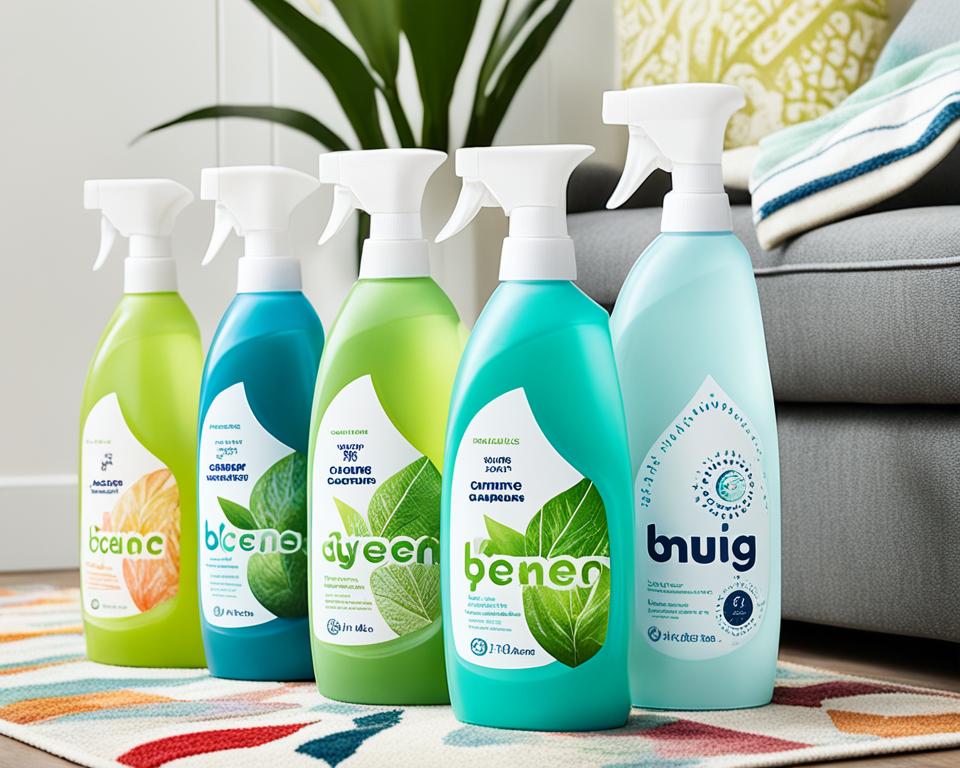
Pro-Tip: As tenacious as some stains might be, fabric softeners are another no-go. They leave behind a residue that can attract dirt and reduce the natural absorbency of your rug. Stick to detergents like Heritage Park’s, and watch your rugs return from the wash vibrant and ready to grace your floors once more.
Remember, a well-chosen detergent is a guardian of your rug’s beauty and longevity. With these rug washing tips at your fingertips, you’re well on your way to ensuring that your rugs stay clean and fresh, without compromising their texture or color.
Tackling the Tough Spots: Efficient Stain Removal Techniques
Addressing spills and stains on your beloved rugs can seem daunting, but with efficient stain removal techniques, you can face these challenges head-on. The first critical step? Pre-treating. This rug care ritual is all about targeting the blemish before it becomes a permanent mark on your decor. So, with a few simple products and the right approach, keeping your rugs spotless is within reach.
Remember: When it comes to rug care, immediate action is your best defense against stubborn stains.
Begin by identifying the type of stain on your rug, as this will determine the ideal cleaner. For general mishaps, a quality stain remover, such as Zout or Shout, or a blend of heavy-duty liquid detergent like Tide or Persil can be your allies. Apply it directly to the troublesome patch and gently work it in with a soft brush—the finer the bristles, the better. An old toothbrush can do wonders for getting into those tight weave patterns.
However, what if the stain is already setting in? Mix a solution of water and your preferred detergent and spray it onto the stain. Instead of a furious rubbing, which might damage the fibers, opt for a soft blotting action. Allow the solution a moment to break down the stain. Patience is a virtue that pays off here, as the gentle lifting of the stain guards the rug’s appearance and its long-term durability.
Here’s a quick guide to help you with the most common culprits you’ll face in your rug care journey:
| Stain Type | Treatment Solution | Application Method |
|---|---|---|
| Greasy Spots | Heavy-duty liquid detergent | Direct application and brush gently |
| Liquid Spills | Water and mild detergent mix | Spray and blot carefully |
| Mud and Dirt | Stain remover or detergent | Apply, let sit, then blot |
| Wine or Juice | Water and detergent blend or specialized stain remover | Pat gently until the stain lifts |
Rug care tips also extend to ongoing maintenance beyond the immediate spill. Periodic gentle cleaning even when no spills are in sight ensures that dirt doesn’t settle deep within your rug’s fibers. Incorporating these preemptive cleaning habits can extend your rug’s life and keep it looking its best.
Combining these efficient stain removal techniques with your routine rug care practices ensures a clean and welcoming ambiance in your home. And as you nurture your rugs with attentive care, they will continue to be vibrant fixtures in your space, contributing to the harmony and beauty of your decor.
Rug Cleaning Instructions: Machine Washing Tips
When the time comes to freshen up your home with clean rugs, knowing the correct machine washing rugs methods is essential. A bit of know-how not only revives the look and feel of your rugs but also helps to extend their lifespan significantly. Whether it’s a light spruce up or dealing with the aftermath of a spill, the approach to cleaning your rugs effectively while ensuring they stay intact is what we’ll dive into here.
Load Balancing in Washers
One of the critical rug cleaning instructions involves balancing the load in your washing machine. This step is often overlooked, yet it’s crucial for preventing damage to both your rugs and your washer. In a standard top-load washer with a center agitator, ensure that you’re placing the rug so it evenly surrounds the agitator. This helps the machine to stay balanced during the high-spin cycle. For front-load washers, which lack an agitator, balancing two rugs of similar size or complementing the load with towels is your best bet for a smooth run. Here’s a breakdown of how to balance your washer for different rug types:
| Type of Washer | Rug Type | Load Balancing Instruction |
|---|---|---|
| Top-Load | Single Rug | Place evenly around the center agitator |
| Front-Load | Two Rugs | Load simultaneously for balance |
| Front-Load | One Rug | Balance with towels |
Washing Frequency and When to Call a Professional
The frequency of washing your rugs largely depends on their placement in your home and your lifestyle. Typically, it’s recommended to give your rugs a proper wash every six months. However, if your rugs lie in high traffic zones, or if pets and allergies are in the picture, you might need to wash them more frequently. Let’s not forget – some rugs have specific needs that only professional cleaning can safely fulfill. Here’s when you might consider calling in the experts:
- If your rug is labeled dry clean only, it’s safer to leave the job to professionals.
- Rugs that are too large to fit in your home washing machine.
- When you notice the rug is heavily soiled beyond what typical home washing can resolve.
- Your rug has delicate fibers or dyes that need specialized care.
Following these guidelines will ensure that your rugs remain vibrant and clean without unexpected wear and tear. Be attentive to your rugs’ needs and they’ll keep on complementing your space beautifully for years to come.
Maintaining Your Rug Post-Cleaning: Preservation Tips
Once you’ve managed the cleaning, preserving your rugs so they continue to enhance the beauty of your home requires attention to certain rug maintenance tips. A well-maintained rug not only uplifts the aura of your space but also lasts significantly longer, allowing you to enjoy its warmth and design for years. Here are some post-cleaning maintenance suggestions to help ensure that your rugs retain their allure.
Regular Vacuuming: The simplest yet most effective technique to keep your rugs looking new is regular vacuuming. This prevents dirt from embedding within the fibers, which can lead to a worn and tattered appearance over time. Approach high-traffic areas more frequently, and don’t neglect the rug’s underside—vacuuming this area a few times a year will help minimize grit and dust accumulation.
Spot Treatment of Stains: Sometimes a quick response can save you from a full-blown washing chore. For minor spills, spot cleaning is an indispensable tool in your rug care arsenal. Gently dab and clean the affected area with a solution appropriate for the rug fiber to minimize lingering stains.
Shaking Out Rugs Regularly: Giving your rugs a good shake outdoors isn’t just a therapeutic exercise; it helps dislodge trapped dirt and debris. Do this every few weeks or as part of your cleaning routine to shake out the grime that even vacuuming may miss.
Rotating Your Rugs: Consistent foot traffic and sun exposure can wear out a rug unevenly. By rotating your rugs periodically, you ensure that wear is distributed evenly, thus preserving the integrity of your rug’s design and fabric.
Using Baking Soda: Baking soda isn’t just for making your baked goods rise—it can also give a lift to your rug by eliminating odors. Sprinkle a small amount, let it sit, and then vacuum it up to keep your rugs smelling fresh and pleasant.
To further assist you in taking care of your rugs, consider this detailed table:
| Rug Care Activity | Description | Frequency |
|---|---|---|
| Vacuuming | Removal of surface dirt and dust | 1-2 times a week |
| Spot Cleaning | Immediate treatment of spills to avoid stains | As needed |
| Shaking Out Rugs | Dislodging of trapped dirt and debris | Every few weeks |
| Baking Soda Treatment | Neutralization of odors | Once every month |
| Rotating | Even distribution of wear and tear | Every 6 months |
These simple steps ensure that rug cleaning is more than just a task—it’s part of a process that enhances their lifespan and maintains their beauty. By preserving your rugs appropriately, you safeguard the investment you’ve made in your home’s comfort and style.
Conclusion
As we reach the end of our comprehensive guide, it’s essential to highlight the best practices for drying rugs, a key element in ensuring they stay intact and fresh over time. To maintain your beloved rugs, always consider the unique needs of each piece, because when it comes to rugs, a one-size-fits-all approach simply does not exist. Some rugs are resilient enough for an air-only cycle in the dryer, but many should never face the rigors of machine drying due to the risk of irreparable heat damage.
Pre-cleaning measures are paramount in rug care, with testing for colorfastness and spot-treating stains being critical steps to avoid common cleaning mishaps that could mar your rug’s beauty. When it’s time to wash, selecting the right detergent will ensure a deep clean without harming the fabric’s integrity. Adequate machine washing and drying techniques will further protect the life and appearance of your rugs.
Regular maintenance, encompassing vacuuming, managing stains in a timely manner, and adhering to proper drying methods, plays a significant role in ensuring intact and fresh rugs throughout your home. By incorporating these rug care essentials into your routine, you not only preserve their functionality but also their role as key elements in your decor. Put simply, the care you put into your rugs reflects the comfort and beauty they bring to your living spaces.
FAQ
Can rugs go in the dryer?
Not all rugs can safely go in the dryer. Those with rubber backing should never be dried using heat to prevent deterioration. Check the care label for instructions, and if in doubt, opt for air drying to be safe.
How can I identify if my rug is washable and understand its material composition?
Look for a care label on your rug, which should indicate if it’s machine washable and provide details on the material composition. Rugs made of cotton, synthetic fibers, or blends are typically washable, while those of wool, silk, or with special coatings might require professional cleaning.
What could happen if I clean my rug using incorrect methods?
Incorrect cleaning methods can result in damage like shrinkage, color bleeding, deterioration of rubber backing, and overall degradation of the rug’s fibers and appearance.
How do I test for colorfastness before washing my rug?
To test for colorfastness, dampen a white cloth with water and gently rub it on a small, inconspicuous area of the rug. If the dye comes off on the cloth, the rug is not colorfast and may bleed in the wash.
Why is it important to spot treat stains on rugs?
Spot treating stains helps remove them more effectively and can prevent the spread or setting of the stain during the wash. It also allows you to treat the stain with the most appropriate method depending on its origin.
What is the best way to handle rugs with rubber backing?
Rugs with rubber backing require special care. They should be washed on a gentle cycle using cold water and air-dried, never exposed to high heat in the dryer.
What are the best practices and techniques for machine drying rugs?
If your rug is suitable for machine drying, use the air-only or tumble dry no-heat setting. For delicate rugs, avoid machine drying altogether and instead air dry to prevent heat damage.
What are the benefits of air drying rugs?
Air drying prevents the potential heat damage associated with machine drying, maintains the rug’s structure and appearance, and is environmentally friendly since it uses no electricity.
How does the air-only cycle work for drying rugs in the dryer?
The air-only cycle tumbles the rug in the dryer without using heat, allowing it to dry through the circulation of room-temperature air, which safely dries the rug without causing heat damage.
What are some washing and drying best practices for rubber-backed rugs?
Wash rubber-backed rugs on a gentle cycle with cold water, use a mild detergent, and always air dry. If necessary, a quick, heatless tumble in the dryer can help fluff up the rug without causing damage.
What ingredients should I avoid when washing rugs, and why?
Avoid using bleach or harsh chemicals as they can damage the rug’s fibers, especially chlorine bleach on rubber-backed rugs which can cause the rubber to deteriorate. Opt for mild, plant-based or enzyme-based detergents instead.
Which detergents are recommended for the longevity of my rugs?
Use a gentle, enzyme-rich detergent that is safe for various fabrics. Look for detergents designed for use with the specific materials of your rug and avoid those with harsh chemicals.
What are some efficient stain removal techniques for rugs?
Pre-treat stains by applying a stain remover or a mix of water and a suitable detergent, gently blot to lift the stain rather than rubbing it, and thoroughly rinse out any cleaning solutions.
How should I balance the load in my washing machine when washing rugs?
For top-load washers with an agitator, place the rug evenly around the center. For front-loaders, balance the rug with another of similar size or weight, like towels, to ensure an even wash and prevent the washer from becoming unbalanced.
How often should I wash my rugs, and when should I consider professional cleaning?
Typically, rugs should be washed every six months, but this can vary based on traffic, pet activity, or specific household needs. If the rug is heavily soiled, delicate, or you’re unsure of the proper cleaning method, professional cleaning may be the best option.
What are some tips for maintaining my rug after cleaning?
Regular vacuuming, immediate stain treatment, shaking out the rug to remove dust and debris, and using baking soda for odor removal are great ways to maintain your rug. Also, rotating your rugs periodically can help them wear evenly.
